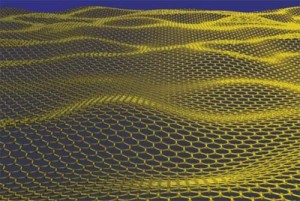 It has been a while since I posted an actual article. I feel this innovation is something that a twitter post really couldn’t do justice to. Scientists at Princeton have made a dramatic leap forward in materials simulation. Traditionally when simulating materials on super computers programs must calculate the energy of an atom from scratch to determine the properties of a substance. The scratch calculation is complex and when you scale this across hundreds or thousands of atoms simulations are extremely intensive.
It has been a while since I posted an actual article. I feel this innovation is something that a twitter post really couldn’t do justice to. Scientists at Princeton have made a dramatic leap forward in materials simulation. Traditionally when simulating materials on super computers programs must calculate the energy of an atom from scratch to determine the properties of a substance. The scratch calculation is complex and when you scale this across hundreds or thousands of atoms simulations are extremely intensive.
Enter the new formula based solution from Carter and Chen. This solution avoids having to calculate the energy of each electron in a material and instead accurately predicts the kinetic energy of electrons across the entire substance. This takes the most complex repetitive portion out of the simulation and allows it to scale to macroscopic samples of a substance.
So what does this really mean? Well, this will allow them to accurately and easily simulate how new theoretical transistor designs will work. So instead of having to actually make a new transistor from new materials and experiment to see if it performs the way you want, you can just simulate it. It can work for many other materials too, not just computer parts. What this is really letting scientists do is bring quantum properties into the realm of real simulation. This can probably help with fluid dynamics calculations, increasing the accuracy of fusion reactor simulations just as another example.
Heading toward the future, this can allow us to accurately predict how nanotech machines will function. It could even be applied to cells, helping us understand at a quantum level how human cells function. At the rate computer power scales up, efficiencies like this result in massive leaps in simulation capability. Bringing this research together with other fields like full brain simulation may result in some staggering advances.
 Strange antiparticles pop out of RHIC’s quark-gluon plasmahttp://tinyurl.com/y8dj4ksSo far, the LHC has been spending its time ramming protons together, leaving Brookhaven’s Relativistic Heavy Ion Collider (RHIC) the king of the hill when it comes to smashing…
Strange antiparticles pop out of RHIC’s quark-gluon plasmahttp://tinyurl.com/y8dj4ksSo far, the LHC has been spending its time ramming protons together, leaving Brookhaven’s Relativistic Heavy Ion Collider (RHIC) the king of the hill when it comes to smashing…